 On a family trip in the mid 1980‘s, we took the London to Edinburgh line and met a young Swedish couple. While the woman in her early 20s was attractive, she was routinely so, but in the post Borg age, when Edbergs, Wilanders, and Jarryds made such a racket, it was her companion with his preposterously perfect feathered hair, flawless English and effortless friendliness who my teenaged self and younger sister engaged in casual, convivial conversation as he poured Smarties into our hands.
On a family trip in the mid 1980‘s, we took the London to Edinburgh line and met a young Swedish couple. While the woman in her early 20s was attractive, she was routinely so, but in the post Borg age, when Edbergs, Wilanders, and Jarryds made such a racket, it was her companion with his preposterously perfect feathered hair, flawless English and effortless friendliness who my teenaged self and younger sister engaged in casual, convivial conversation as he poured Smarties into our hands.
The pretty pair departed the train before we crossed the border, and my sister recalls that it was in the “middle of nowhere,” so perhaps, we’ve surmised, they got off at York or Darlington to hike the Yorkshire Dales. We’ve always imagined that the intrepid Scandinavians were thrust into a wondrous adventure after they disembarked.
Hinging on a boy’s obsession with the comings and goings of a man he believes to be his estranged father at his local train station, the Polish film “Tricks” is an attractive effort with many commendable elements which is somewhat foiled, one feels, by a vague central theme of parental abandonment. There’s a gnawing sense that, like an interrupted train journey, there is vitally more to the handsomely illustrated story than director and screenwriter Andrzej Jakimowski was willing to tell.
Stefek (Damian Ul) is a young boy of eightish who spends his summer days hanging out at the train station in his country town. He discovers that one of the men who regularly travels to the station in a suit and carrying a briefcase is his father who left the family, started another, and has since chosen to cut off contact with Stefek and his older sister. Stefek watches him from afar, and they interact on the platform with only passing glances. One must deduce that the father (Tomasz Sapryk) left when Stefek was no older than a baby because he doesn’t appear to readily recognize his child, even though he travels through the town ostensibly on business on a daily basis and a boy of his abandoned son’s age is lurking at the station.
Stefek begins to karmically conjure a reunion with his father. He uses borrowed carrier pigeons and strategically placed toy soldiers and sticks for his quest in scenes that are some of “Tricks” most delightfully delivered. His eighteen-year-old sister Elsa, played by the photogenic Ewelina Walendziak, is the film’s most well-developed character and while she doesn’t dissuade her younger brother from his desire, she’s not terribly interested herself in retracing a relationship with her father. Stefek’s mother is a benevolently peripheral character who spends most of the film off camera running a modest corner shop.
On one particularly sun-dappled summer day Stefek shadows the suited businessman as he strolls through the town after missing a train, buying street fruit, wading in a bucolic stream, visiting with old chums and running into former acquaintances. During the walk, the father appears to spot in a window a photo of the three he left behind in their Sunday finery. As the sun begins to set, Stefek and Elsa watch from a recessed doorway as their father purchases a modest bunch of flowers, walks to the door of their mother’s humble shop, pauses, then turns away. In the film’s final scene when Stefek finally strikes up a conversation at the end of the day with this man at the station, the film concludes a crucial moment as his the dad utters, “I’m sitting on the platform but not waiting for a train.” And then the credits begin to crawl, the film abruptly ending at a departure, one which could be the crux of a movie.
Jakimowski has a knack for shooting fetching scenes. The film moves effortlessly through charming, winding narrow old-world streets shrouded by modern concrete apartment blocks. Vignettes of swooping carrier pigeons captured in the breaks between buildings and Stefek walking the train tracks around the town leaving toy soldiers on the railroad ties are filmed expressively by cinematographer Adam Bajerski. If the film had simply wished to unfold as a verdant narrative of a summer in a young boy’s life, it contains scenes like these in abundance, with further simple, sweet moments such as a picnic in the woods, walks across a looming bridge and a carefree motorcycle ride through the town.
Stefek perpetually carries a fretful countenance, habitually chewing the inside of his lip, but as a child observer, he isn’t provided with a view into the insights necessary to illuminate the audience to a greater understanding of the father‘s reasoning. Elsa’s escapades illustrates a story which doesn’t need to be enhanced by the father’s choices, or even his presence. She struggles in a plucky way with a hectic schedule filled with a mundane dishwashing job, studying Italian lessons as she attempts to secure a job with an Italian company, and just trying to enjoy the last summer of her youth with her likable, mechanic boyfriend, all the while serving as a surrogate mother to Stefek. Most puzzling for a film apparently so immersed in a theme of family bonds is the decision to make Stefek and Elsa’s mother (Iwona Fornalczyk) such a perplexingly undeveloped character.
If the attractive “Tricks“ suffers from a paucity that suggests it’s a prologue, then “Cherry Blossoms,” the latest film from German director Doris Dorrie, is essentially two excellent, fully-formed shorter films which coalesce into a satisfying whole.
Trudi (Hannelore Elsner) learns that her husband, Rudi (Elmar Wepper), a nearing-retirement-age, unassuming bureaucrat she dotes upon, is terminally ill. They depart upon her insistence for a number of trips while she believes Rudi can still travel. They visit the mountains, journey to Berlin to see two of their children, and embark to the Baltic for a beach holiday. They are a kindly but not saccharine couple who their children barely tolerate and their grandchildren consider a distraction and it’s a deft touch by Dorrie that the person who shows the couple the most simple kindness in Berlin is their daughter’s girlfriend (Nadja Uhl), who accompanies Trudi to a Butoh performance which is so clearly important to her. After these European travels, she has the intention of taking Rudi to Japan, a country which has always fascinated, enamored and moved her. But on a still morning in their Baltic hotel, Trudi has passed away and we have at her death the conclusion of the first half of the film which, upon reflection, is a completely contained, emotionally poignant 45 minutes.
Slowly in the second portion, Rudi, an instinctually unadventurous man, begins to understand that perhaps he was too accommodating to Trudi’s role as an at-home supplicant in their relationship and even though she gained great heart from her decades of nurturing he recognizes that as the person receiving this devotion, he should have been more aware of her sacrifice and that he should have been insistent that Trudi not subsume her desires and dreams for his contentment. As he rummages through her belongings, Rudi finds postcards of Mount Fuji and long ago photos of a face-painted Trudi in Butoh poses and realizes he was both overly influential and silently complicit in her self denial. So he decides to make a pilgrimage to Japan, to take her trip of a lifetime. The journey is complicated because their third child works in finance in Tokyo, and like his siblings in Berlin, he, sadly, finds his father‘s presence an imposition and uses the rigors of his work schedule as a convenient excuse for his absences and distant manner. As Rudi begins to investigate Tokyo on his own, he befriends Yu (Aya Irizuki), an 18-year-old Butoh street dancer. They develop a friendship and a connection which will help both of them confront and then embrace grief and loss.
Dorrie, who also wrote the script, has crafted a film laden with achingly emotional scenes but at 127 minutes “Cherry Blossoms” takes the time to develop the legitimacy of these tear-jerking wallops, especially with the characterizations of Trudi and Rudi, so that the weepy moments are not manipulative. The film ends with the married couple magically intertwined with Mount Fuji looming in the background, the journey of these two people and the two mini films both meaningfully and movingly merged.
(“Tricks” and “Cherry Blossoms” screened at the Portland International Film Festival earlier this month. “Cherry Blossoms” will be released to theaters in the United States by Strand Releasing.)
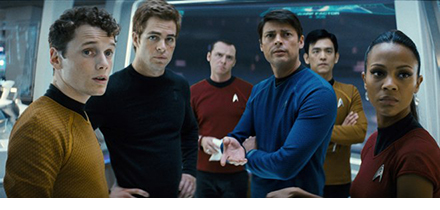

 On a family trip in the mid 1980‘s, we took the London to Edinburgh line and met a young Swedish couple. While the woman in her early 20s was attractive, she was routinely so, but in the post Borg age, when Edbergs, Wilanders, and Jarryds made such a racket, it was her companion with his preposterously perfect feathered hair, flawless English and effortless friendliness who my teenaged self and younger sister engaged in casual, convivial conversation as he poured Smarties into our hands.
On a family trip in the mid 1980‘s, we took the London to Edinburgh line and met a young Swedish couple. While the woman in her early 20s was attractive, she was routinely so, but in the post Borg age, when Edbergs, Wilanders, and Jarryds made such a racket, it was her companion with his preposterously perfect feathered hair, flawless English and effortless friendliness who my teenaged self and younger sister engaged in casual, convivial conversation as he poured Smarties into our hands. The infobahn is atwitter with “Twilight.” While the North American box office nears $200 million and the world-wide figures double that return, and stories abound of behind-the-scenes intrigue with machinations so rabid that the director has been excised from the sequel and a third film has already been marked on calendars for 2010, the clamor can’t conceal that this vampire movie is a trifle, an unremarkable film so slight that random episodes of “Buffy” bustle with more humor, charm, wonderment, and, most importantly, verve. Catherine Hardwicke has directed a film without magic or vitality, fatal exclusions for a fantasy flick.
The infobahn is atwitter with “Twilight.” While the North American box office nears $200 million and the world-wide figures double that return, and stories abound of behind-the-scenes intrigue with machinations so rabid that the director has been excised from the sequel and a third film has already been marked on calendars for 2010, the clamor can’t conceal that this vampire movie is a trifle, an unremarkable film so slight that random episodes of “Buffy” bustle with more humor, charm, wonderment, and, most importantly, verve. Catherine Hardwicke has directed a film without magic or vitality, fatal exclusions for a fantasy flick. 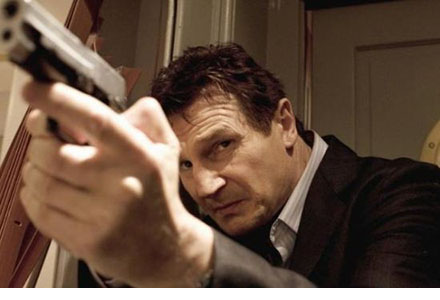 When Liam Neeson lays siege on Paris, he transforms the capital into “The City of Lights Out.”
When Liam Neeson lays siege on Paris, he transforms the capital into “The City of Lights Out.”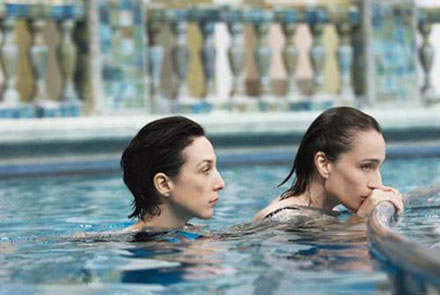 “I’ve Loved You So Long” unfolds patiently but not sluggishly as the textured tale of Juliette Fontaine (Kristin Scott Thomas), an intensely private and haunted woman reuniting with the world after her release from a fifteen year prison sentence for killing her own son.
“I’ve Loved You So Long” unfolds patiently but not sluggishly as the textured tale of Juliette Fontaine (Kristin Scott Thomas), an intensely private and haunted woman reuniting with the world after her release from a fifteen year prison sentence for killing her own son. “Slumdog Millionaire,” the new film from Danny Boyle, is captivating but much like his last work, the commendable sci-fi mystery thriller “Sunshine,” it’s a movie compromised by a conventional, tonally unbalanced final reel.
“Slumdog Millionaire,” the new film from Danny Boyle, is captivating but much like his last work, the commendable sci-fi mystery thriller “Sunshine,” it’s a movie compromised by a conventional, tonally unbalanced final reel. 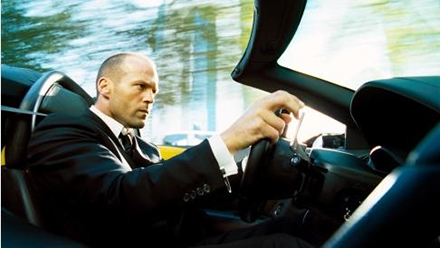
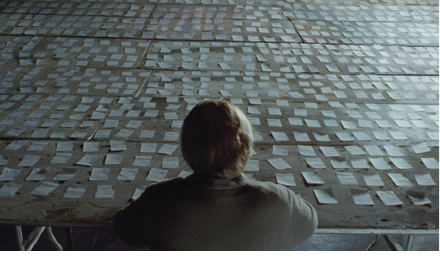 “Synecdoche, New York” always promised to require resolute viewing.
“Synecdoche, New York” always promised to require resolute viewing. In 1965, saxophonist Rolando Alphonso, late of The Skatalites, rounded up several of his former bandmates in the recording den of Studio One in Kingston as The Soul Brothers to record their version of the “James Bond Theme.” Braced by Bryan Atkinson’s filthy bass, Lloyd Knibb’s whiplash drums and Lynn Taitt’s slinky guitar and accentuated with the steady piano beat of Jackie Mittoo and the infectious vocal percussion of ‘King Sporty,’ the song explodes with the brash, urgent, almost abrasive, horn section of Alphonso, ‘Dizzy’ Moore and Rupert Dillon. The Soul Brothers pay homage to the brilliant, original tune while taking it from the quicksand of the bandstand to the sound systems of street level in the baddest cover of the tune to date.
In 1965, saxophonist Rolando Alphonso, late of The Skatalites, rounded up several of his former bandmates in the recording den of Studio One in Kingston as The Soul Brothers to record their version of the “James Bond Theme.” Braced by Bryan Atkinson’s filthy bass, Lloyd Knibb’s whiplash drums and Lynn Taitt’s slinky guitar and accentuated with the steady piano beat of Jackie Mittoo and the infectious vocal percussion of ‘King Sporty,’ the song explodes with the brash, urgent, almost abrasive, horn section of Alphonso, ‘Dizzy’ Moore and Rupert Dillon. The Soul Brothers pay homage to the brilliant, original tune while taking it from the quicksand of the bandstand to the sound systems of street level in the baddest cover of the tune to date. From Vladivostok, along the desolate Siberian railway line, through the scrutiny of the protagonists most personal turmoil, the engrossing thriller “Transsiberian” reveals its secrets like a matryoshka doll. A gripping mystery which ratchets up the suspense while exposing the intricate, introspective consequences, “Transsiberian” is a police drama with brains and brawn.
From Vladivostok, along the desolate Siberian railway line, through the scrutiny of the protagonists most personal turmoil, the engrossing thriller “Transsiberian” reveals its secrets like a matryoshka doll. A gripping mystery which ratchets up the suspense while exposing the intricate, introspective consequences, “Transsiberian” is a police drama with brains and brawn.